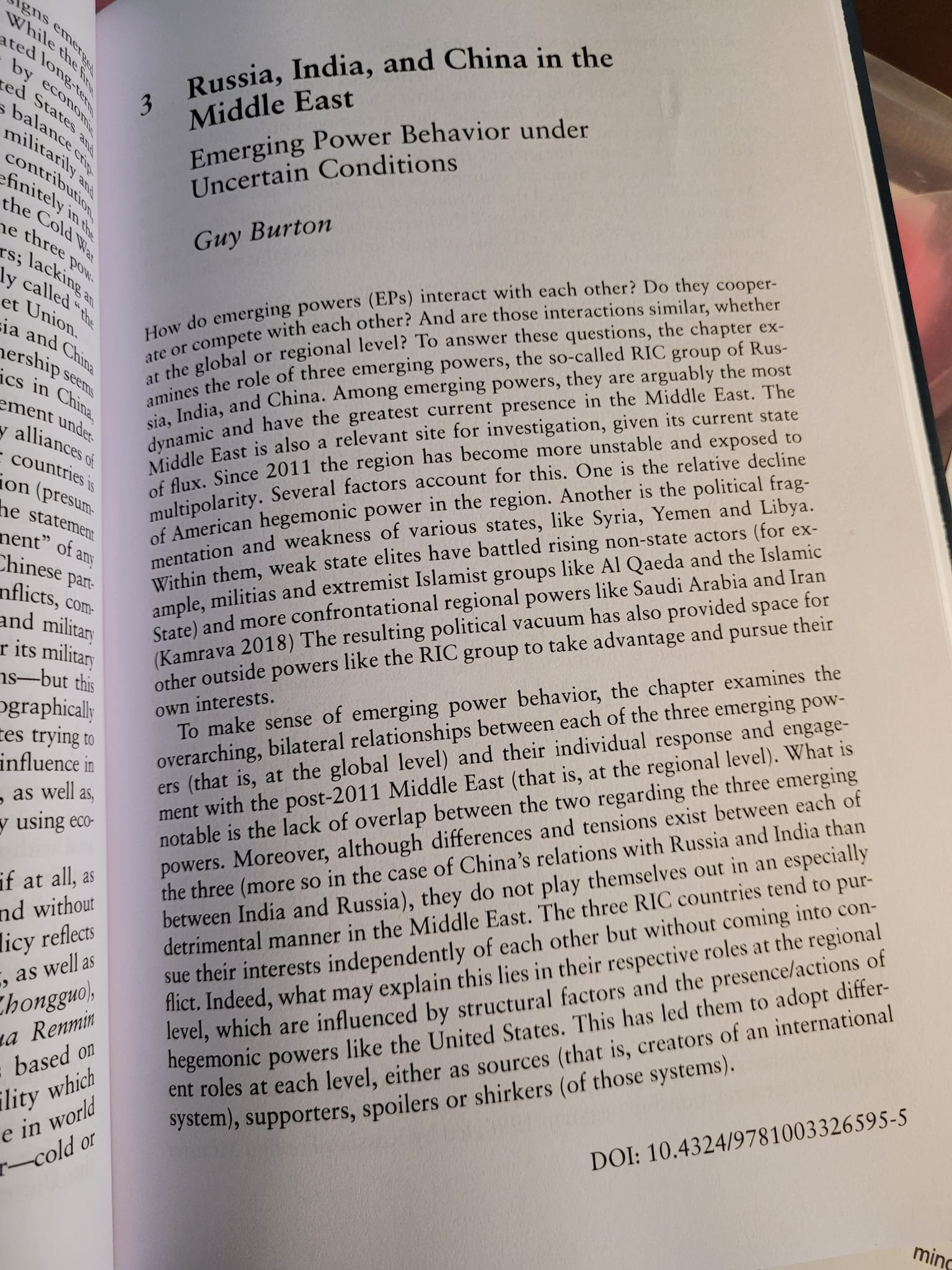Russia, India, and China in the Middle East: Emerging Power Behavior under Uncertain Conditions
EAST-WEST ASIA RELATIONS IN THE 21ST CENTURY: FROM BILATERAL TO INTERREGIONAL RELATIONSHIPS
How do emerging powers (EPs) interact with each other? Do they cooperate or compete with each other? And are those interactions similar, whether at the global or regional level? To answer these questions, the chapter examines the role of three emerging powers, the so-called RIC group of Russia, India and China. Among emerging powers, they are arguably the most dynamic and have the greatest current presence in the Middle East. The Middle East is also a relevant site for investigation, given its current state of flux. Since 2011 the region has become more unstable and exposed to multipolarity. Several factors account for this. One is the relative decline of American hegemonic power in the region. Another is the political fragmentation and weakness of various states, like Syria, Yemen and Libya. Within them, weak state elites have battled rising non-state actors (for example, militias and extremist Islamist groups like Al Qaeda and the Islamic State) and more confrontational regional powers like Saudi Arabia and Iran (Kamrava, 2018) The resulting political vacuum has also provided space for other outside powers like the RIC group to take advantage and pursue their own interests.
…
THE VOLUME IN WHICH THIS CHAPTER IS PUBLISHED IS AVAILABLE HERE.


